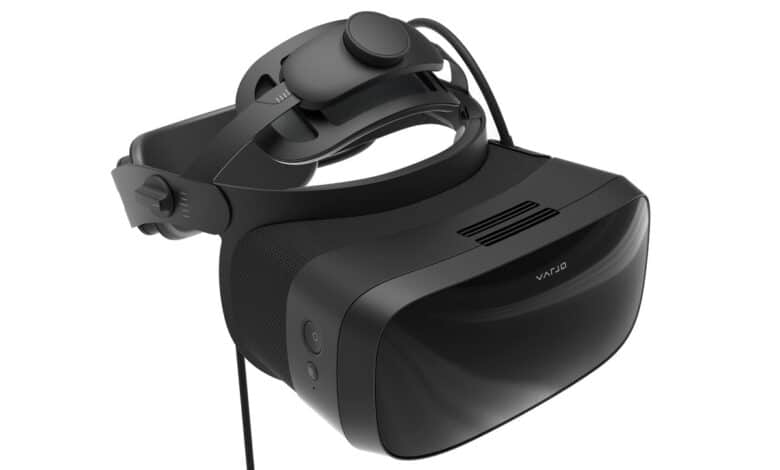
As Varjo’s official sales partner, bestware.com, the in-house e-commerce platform of Schenker Technologies GmbH, is launching the pre-order phase for the high-end VR headset to coincide with the announcement of the Varjo Aero. The VR HMD is clearly aimed at enterprise and VR enthusiasts with a resolution of 2,880 x 2,720 pixels per eye, a pixel density of 35 PPD, and aspherical lenses already familiar from the VR-3.
Varjo Aero: High-end VR system
The previous Varjo VR-3 system was aimed more at businesses, but is considered an absolute insider tip among gamers. But the solutions, with which Varjo has so far been aimed exclusively at professional users and companies, were so far also for private end users coupled to the additional purchase of an annual license intended for business customers to use the Varjo software.
This is changing with the new Aero VR glasses from the Finnish company, which were presented today. Here, they want to pick up private users and enthusiasts. Looking at the resolution alone, it’s clear that Varjo remains unmistakably high-end, as 2,880 x 2,720 pixels per eye is more than conventional consumer VR headsets offer and also predestines the new model for immersive VR training simulations, design and product development in virtual reality, as well as VR tours of museums or showrooms and for use in VR arcades.
Aspherical lenses in the Varjo Aero VR headset
The same goes for the optical lenses: instead of the usual Fresnel models, which require the VR HMD to be precisely aligned in front of the user’s eyes for maximum sharpness, Varjo uses aspherical lenses otherwise familiar from enterprise models like the VR-3. While the Aero, unlike the VR-3, does without an additional focus display, it already boasts an exceptionally sharp display given a pixel density of 35 pixels per degree.

High-color mini LED display
In addition, the headset’s mini-LED displays score high with a 90Hz refresh rate, 99 percent sRGB and 95 percent DCI-P3 color space coverage, and a 115-degree wide field of view. The integrated eye tracking with a sampling rate of 200 Hz also corresponds to the consistent high-end approach.
Thanks to foveated rendering, content that is in the direct field of view can be displayed particularly sharply, while at the same time reducing the computing effort for the graphics card when rendering images in the peripheral area.
Weighing just 487 grams, the Aero is significantly lighter than the VR-3 at 558 grams, which benefits wearing comfort. Its three-point headband adds another 230 grams to the overall weight. Comfort features also include automatic adjustment to eye relief between 57 and 73 millimeters. The VR headset connects via a dedicated USB-A slot from version 3.0 and a DisplayPort 1.4.

Price and availability
The Varjo Aero VR glasses are available for pre-order now at bestware.com. The MSRP is 2,369 euros, and an additional software subscription, as in the case of the Varjo VR-3, is not necessary. Delivery is scheduled for December 2021.



